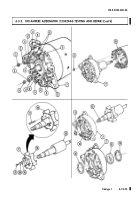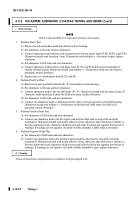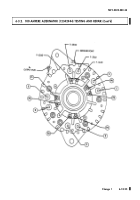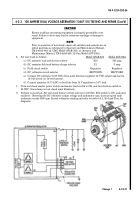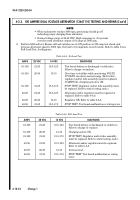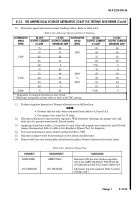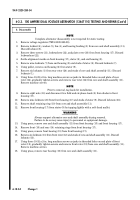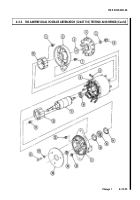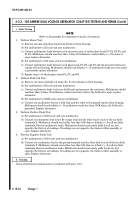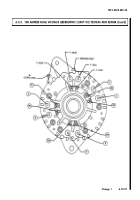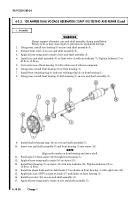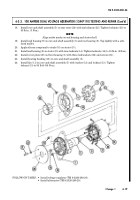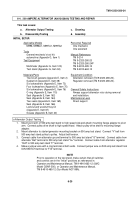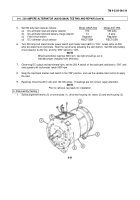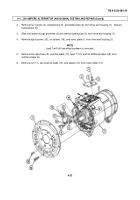TM-9-2320-280-34 - Page 338 of 1258
TM 9-2320-280-34
Change 1
6 - 1 8 . 3 3
6±-±3±
.±3±
. 100 AMPERE DUAL VOLTAGE ALT±E±R±N±ATOR (12447110) TESTING AND REPAIR (Cont’d)
10.
Alternator speed and current output tracking values. Refer to table 6-A.5.
CONNECT
DISCONNECT
DIAGNOSIS
AMPS RISE
AMPS FALL
Alternator OK. See note. Replace regulator
only if low AMPS (40-59)/low VOLTS (21-25)
are indicated in table 6-A.3 and/or table 6-A.4.
NO CHANGE
NO CHANGE
Alternator must be repaired. Refer to static
testing, task c.
Table 6-A.6. Regulator Bypass Test.
11.
Perform regulator bypass test. Prepare alternator as in full-load test.
NOT E
• Perform this test only when instructed from tables 6-A.3 and 6-A.4.
• Use jumper wire rated for 15 amps.
12.
Disconnect alternator connector from regulator. With alternator spinning, use jumper wire and
short pin A to ground momentarily. Record results.
13.
Amperage should rise within ± 10 percent of rated value with jumper wire connected, and fall with
jumper disconnected. Refer to table 6-A.6, Regulator Bypass Test, for diagnosis.
14.
Turn test stand master power switch and load switch to OFF.
15.
Disconnect jumper wires from terminals on test stand and alternator.
16.
Remove belt from test stand pulley and alternator pulley. Remove alternator from test stand.
ALTERNATOR
28 VDC
14 VDC
SPEED
OUTPUT CURRENT
OUTPUT CURRENT
(RPM)
²5 AMP
MINIMUM AMP
25
36
2000
38
43
52
33
65
20
**85
0
*0
8
4000
25
32
to
48
52
8000
70
30
87
13
**100
0
Table 6-A.5. Alternator Speed and Current Tracking.
* Dependent on ammeter location in test circuit.
**Minimum acceptable current with no load on 28 VDC system.
ALTERNATOR
28 VDC
14 VDC
SPEED
OUTPUT CURRENT
OUTPUT CURRENT
(RPM)
²5 AMP
MINIMUM AMP
*0
26
10
31
1,200
25
23
35
13
48
0
*0
23
15
34
1,500
32
37
55
14
69
0
2,000
*0
20
Back to Top

